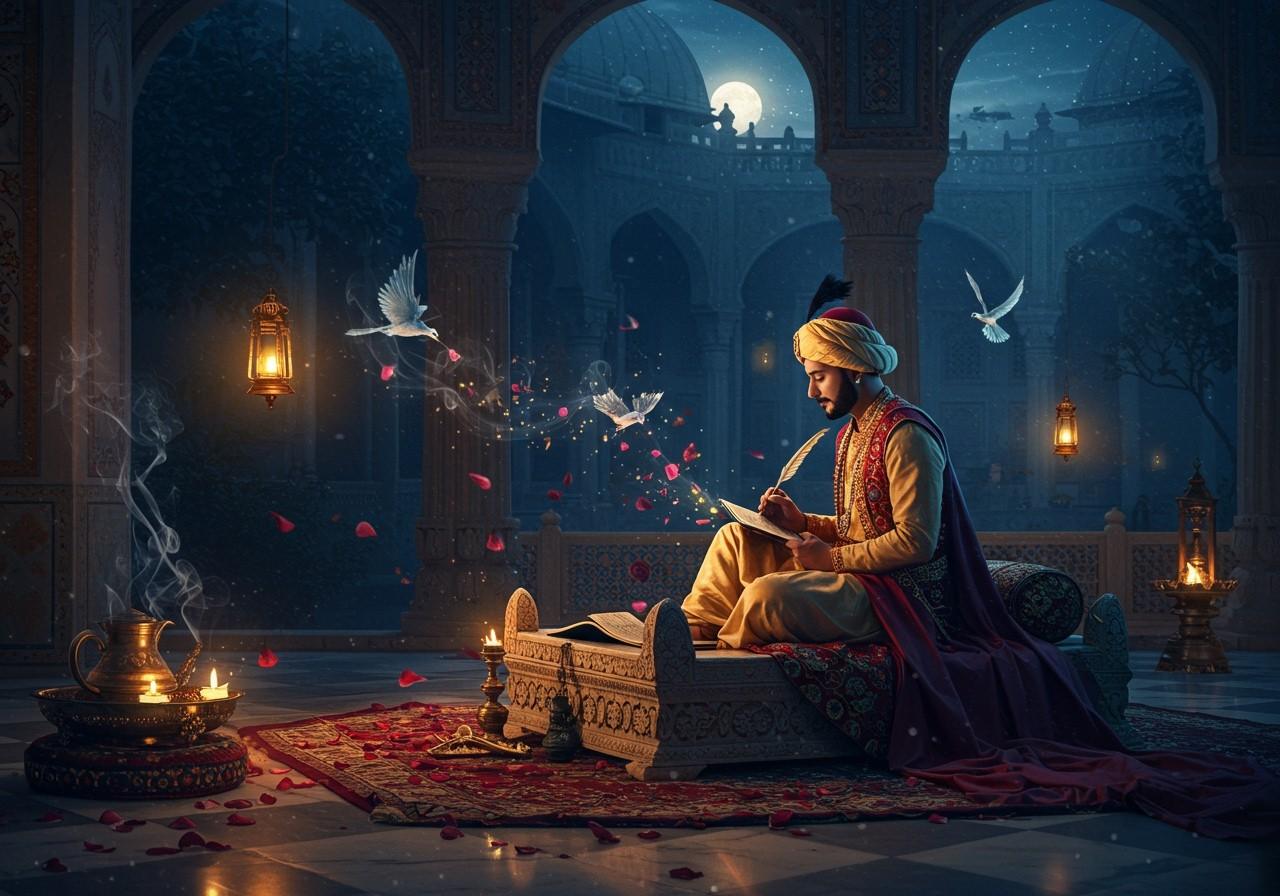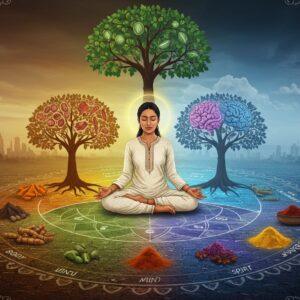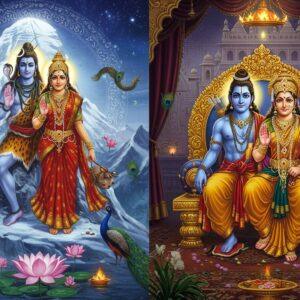
Urdu poetry and Shayari have a rich history, captivating hearts with their profound beauty and emotional depth. These art forms are essential to the literary world of the Indian subcontinent and remain relevant today, transcending languages and cultures.
Delving into Urdu Poetry
Urdu poetry, a literary expression using the Urdu language, is renowned for its rich vocabulary and melodious quality. Its roots trace back to the Mughal era, evolving over time to incorporate diverse influences. Key features of Urdu poetry include:
- Metaphors and Symbolism: Poets skillfully employ imagery to convey deep emotions and create vivid pictures in the reader’s mind. This allows for nuanced expression and interpretation, adding layers of meaning to the verses.
- Intricate Rhyme Schemes: Structured rhyme schemes provide rhythm and flow to the verses, enhancing the musicality and memorability of the poetry. This structured approach also adds to the aesthetic appeal of the art form.
Urdu poetry plays a crucial role in preserving cultural heritage and language, carrying traditions forward through its expressive power. It acts as a bridge between generations, connecting people to their roots and shared history.
The Art of Shayari
Shayari, a captivating form of Urdu poetry, expresses emotions and thoughts through structured verses. It captures feelings in lyrical forms like Ghazal, Nazm, and Rubaiyat, each with unique charm and themes.
Ghazal, known for its romantic and melancholic verses, speaks to the soul. Mirza Ghalib (1797-1869), a master of Ghazal, expressed love and longing with intricate language and deep insights. His famous verses “Hazaron khwahishe aisi ke har khwahish pe dam nikle” exemplify the depth of desire.
Nazm allows poets to explore broader themes. Allama Muhammad Iqbal (1877-1938), revered as the “Poet of the East,” used Nazm for philosophical discourse in “Shikwa” and “Jawab-e-Shikwa.” His verse “Lab Pe Aati Hai Dua Ban Ke Tamanna Meri” resonates deeply with its spiritual longing.
Rubaiyat, with its quatrains, offers philosophical reflections in concise stanzas. Mir Taqi Mir (18th Century), often called “Khuda-e-Sukhan” (The God of Poetry), mastered the Ghazal, expressing poignant emotions of love and loss.
Shayari’s roots in Persian and Arabic traditions enrich its vocabulary and nuances, making it powerful for expression and change. Poets like Faiz Ahmad Faiz (1911-1984), nominated for the Nobel Peace Prize for literature, used Shayari to critique social injustices. Ahmad Faraz (1931-2008) also explored themes of love and social consciousness in his romantic and socially aware poetry.
Urdu and Hindi Shayari: A Shared Heritage
Urdu and Hindi Shayari share a linguistic bond, drawing from Sanskrit, Persian, and Arabic influences. Their intertwined history results in similar themes and styles, yet each maintains distinct features. Urdu Shayari often uses ornate language and metaphors, while Hindi Shayari leans towards simpler expression. Both celebrate love, nature, and social themes.
Urdu and English Shayari: Bridging Cultures
Translating Urdu Shayari into English presents challenges but expands its global reach. Careful rendering is essential to capture the original essence. Notable translators have brought works of poets like Jaun Elia (1931-2002) to English speakers, popularizing Urdu Shayari beyond linguistic boundaries.
The Power of Urdu Words
Urdu’s rich vocabulary enhances Shayari’s emotional impact. Words like “ishq” (love), “gham” (sorrow), and “khushi” (happiness) carry profound meanings. Poets like Parveen Shakir (1952-1994), known for her feminist narratives, used these words to express complex emotions.
Poojn.in: Supporting Your Urdu Poetry Journey
Poojn.in offers a range of products to enhance your connection with Urdu poetry:
- Prayer & Meditation: Meditation cushions and prayer beads (mala) create a serene atmosphere for recitation and reflection. Enhance your focus during poetry sessions with these essential items.
- Writing Supplies: Traditional writing sets and handcrafted paper elevate your writing experience. Capture the beauty of Urdu script with calligraphy supplies, enhancing the aesthetic appeal of your work.
- Home Decor: Wall hangings with Urdu calligraphy and decorative items featuring poetic verses create an inspiring environment. Surround yourself with the beauty of Urdu poetry, enriching your daily life with its artistic presence.
- Incense and Dhoop: Set a calming ambiance for poetry reading and contemplation with original guggal for dhoop and dhuni. The fragrant smoke can enhance your focus and create a peaceful atmosphere.
Visit Poojn.in to explore our collection. We offer secure online shopping and reliable delivery across India.
Embracing the Timeless Beauty of Urdu Shayari
Urdu Shayari stands as a testament to human expression. Its verses weave emotions and thoughts into a tapestry of tradition and modernity. From Ghazals to Nazms, Shayari captures the essence of life. The intertwined history of Urdu and Hindi Shayari enriches the subcontinent’s cultural fabric, bridging divides. Translating these works into English expands their reach, allowing the world to experience their beauty. By celebrating Urdu’s rich vocabulary and poetic heritage, we honor a tradition that transcends time.
FAQs on Urdu Poetry and Shayari
What is Urdu Poetry? Urdu poetry is a literary form using the Urdu language, known for its expressive and musical qualities.
What makes Urdu Shayari unique? Its rich vocabulary, emotional depth, and cultural significance distinguish Urdu Shayari. It beautifully captures human experiences.
How is Urdu Shayari different from Hindi Shayari? While sharing thematic similarities, Urdu Shayari uses the Urdu script and vocabulary, while Hindi Shayari uses Devanagari.
Can Urdu Shayari be translated into English? Yes, though some nuances might be lost, translations help share its beauty with a wider audience.
What are some common Urdu words used in Shayari? Words like “Ishq” (love), “Dard” (pain), “Dil” (heart), “Khuda” (God), and “Zindagi” (life) are frequently used.
Why is Urdu Poetry still popular today? Its timeless themes of love, sorrow, and hope continue to resonate with people’s emotions.
Can someone who doesn’t speak Urdu enjoy Urdu Shayari? Absolutely! Translations and recitations can help appreciate its rhythm and emotion.
How can I start writing Urdu Poetry or Shayari? Familiarize yourself with the language, read famous poets, and practice expressing your emotions in Urdu.


